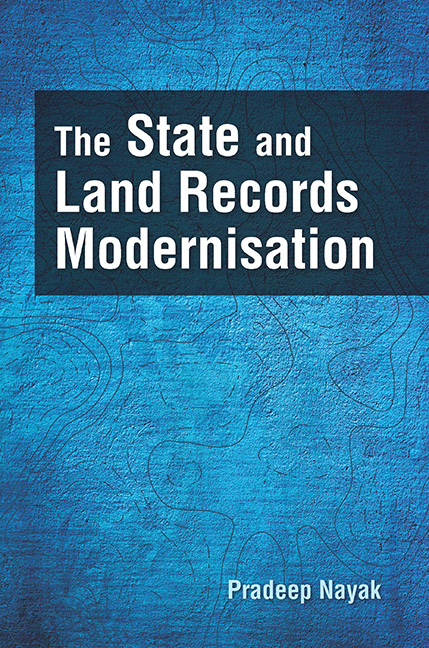Book contents
- Frontmatter
- Dedication
- Contents
- List of Figures and Tables
- Foreword
- Preface
- List of Abbreviations
- 1 The State, ICTs and Governance: A Theoretical Exploration
- 2 E-Governance in Public Policy Discourse in India
- 3 The State and the Policy of Land Records Management
- 4 The Computerisation of Land Records Programme in Odisha
- 5 The Computerisation of Land Records Programme in Karnataka
- 6 The Computerisation of Land Records Programmes in Karnataka and Odisha: A Comparative Study
- Conclusion: Beyond Techno-Managerial Governance
- Select Bibliography
- Index
4 - The Computerisation of Land Records Programme in Odisha
Published online by Cambridge University Press: 02 December 2022
- Frontmatter
- Dedication
- Contents
- List of Figures and Tables
- Foreword
- Preface
- List of Abbreviations
- 1 The State, ICTs and Governance: A Theoretical Exploration
- 2 E-Governance in Public Policy Discourse in India
- 3 The State and the Policy of Land Records Management
- 4 The Computerisation of Land Records Programme in Odisha
- 5 The Computerisation of Land Records Programme in Karnataka
- 6 The Computerisation of Land Records Programmes in Karnataka and Odisha: A Comparative Study
- Conclusion: Beyond Techno-Managerial Governance
- Select Bibliography
- Index
Summary
Introduction
The implementation of centrally sponsored schemes of Computerisation of Land Records (CLR) and Strengthening Revenue Administration and Updating Land Records (SRA&ULR) redesigned as National Land Records Modernisation Programme (NLRMP) in Odisha brings forth a number of interesting issues. These issues concern the role of the state, its bureaucracy, other non-formal actors and agencies, the problems of informatisation in public organisations, and the role of the networks involved in the process.
Land records in Odisha
It has been argued that the land revenue administration in Odisha is the most complicated in India. Before Odisha became a separate state on 1st April 1936, Balasore, Cuttack, Puri and Angul were parts of Odisha division of Bihar-Odisha province, and were governed by the Permanent Settlement of Bengal System. Areas like Ganjam, Koraput, and Baliguda subdivision of Boudh district were parts of the Madras Presidency but transferred to Odisha. Similarly, Sambalpur, Khariar ex-Zamindari and the Mahadevpalli police station areas were transferred to Odisha from the Central Province. In January 1948, around twenty-five princely states were merged with Odisha. Thus, the state of Odisha inherited different revenue and tenancy laws, as the princely states and the areas transferred from Bihar, Central Province and Madras presidency had different systems of revenue administration. The common feature among these different systems was the existence of a large body of intermediaries between the state and the tiller of the soil with varying degree of sub-infeudation.
In the late-nineteenth century, B.H. Baden Powell described the land tenure system and the land revenue administration in Odisha as being ‘full of interest,’ as the ‘Odisha settlement was made without any reference to any theory requiring a landlord or a middleman.’ Odisha had
neither exactly a landlord Settlement nor a village Settlement, nor a raiyatwari Settlement; but when the survey was made and the details of the holdings were ascertained, the Settlement Officers simply had to respect to actual facts; they recorded and secured all rights as they found them existing. Some features of each of the three systems may therefore be traced. A few of the local magnates or chiefs were recognised as landlords, and their assessment was allowed (as a favour) to be permanent.
- Type
- Chapter
- Information
- The State and Land Records Modernisation , pp. 130 - 192Publisher: Foundation BooksPrint publication year: 2015



